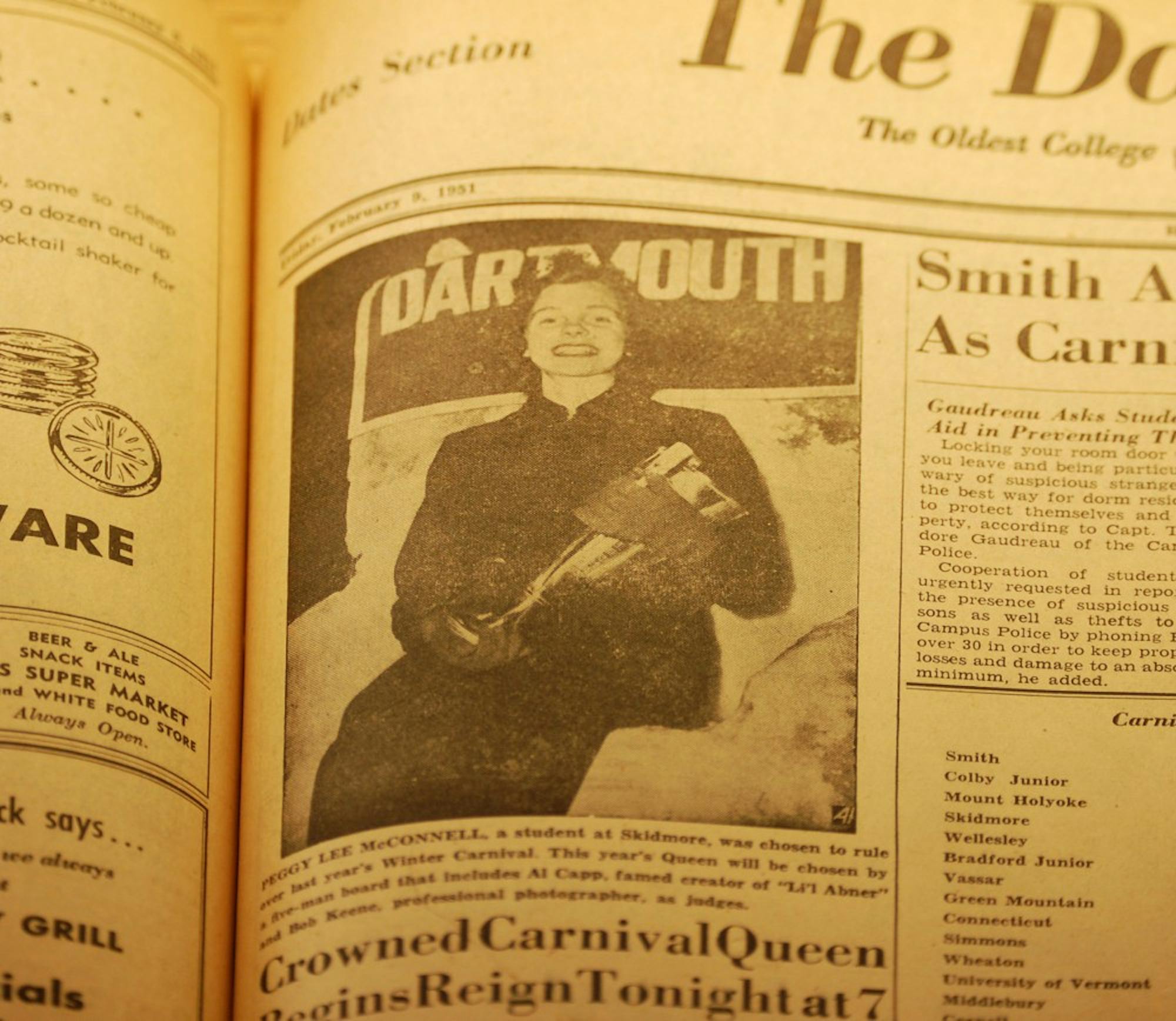While Winter Carnival started off wholesomely enough with winter sports, two years after the inception of the event the Dartmouth men soon expressed their interest for the activities to broaden in scope. In 1912, The Dartmouth published an article begging the administration to bring women to campus for the celebratory weekend. The writers claimed that the Carnival “will not succeed without girls. It is up to every man with a purse or a heart or a bit of enthusiasm . . . to make haste to procure that most necessary item. ”
Procure they did. In 1923, the College introduced a new dimension to the weekend’s fare — a beauty pageant. Fittingly titled, “Queen of the Snows,” the competition ran for 49 years, inspiring flocks of young and beautiful women to trek to the frigid campus.
The Dartmouth responded approvingly to this development, declaring, “Hanover is set back on its collective heels as girls, girls, girls pour in. ” The pageant was a hit.
According to the rulebook of 1928, the competition was as follows:
“From the fairest and loveliest of breathtaking Carnival beauties will be selected that one who most typifies the atmosphere and spirit of this Dartmouth Outdoor Carnival of ice and snow. Not only beauty – but the spirit of New Hampshire snows and Hanover winters will grace her personality and her costume.”
How exactly does a woman represent “New Hampshire snow” or “Hanover winters,” aside from icy hands and a runny nose? Lest we allow ourselves to fantasize that the pageant was anything but a beauty contest, the very structure of the nominating process counters any such foolishness. Rather than having the women enter the competition at their own volition, the pageant was structured so that 15 designated Dartmouth men, dubbed “the snatchers,” would scour the campus in search of the most attractive females, and were instructed to choose three. Following their nomination, the 45 women were sent to the Alumni Gymnasium where they were then subject to the scrutiny of the Judging committee — a group composed of students and “honorary judges,” who would decide on a winner. The new Snow Queen would then be crowned during the conclusion of the Outdoor Evening Show that Friday.
Recently, a student mentioned the challenges of describing campus to people outside of the community, especially prospective students. She said that the most challenging question to answer was, “What’s it like being a woman at Dartmouth?”
I was somewhat surprised by her response. And then I thought to myself — how would I answer the question?
Aside from the vague but ever-present possibility of sexual violence that every woman on a college campus must consider, I have not yet faced any Dartmouth-specific discrimination based on my gender. But I am only in my second term on campus, and Dartmouth’s history of sexism is long and complicated.
When the College made the decision to go co-ed in 1972, the administration faced harsh pushback from its male students and alumni. Women students at Dartmouth were dubbed “cohogs.” Letters were sent to the College demanding that the women be required to remove their clothes when entering the dining hall. Mixed sex dorms were frequently vandalized.
The arrival on campus of the College’s first women students did challenge hallowed rituals. One of the first things to go was the Winter Carnival beauty pageant. It seemed as though passage of the 19th Amendment, the creation of Planned Parenthood, the Equal Pay Act and the federal legalization of contraception had in fact changed society and social customs.
As the Winter Carnival Committee solemnly put it, “Prevailing attitudes indicate that contests which stress beauty as their primary or only criterion no longer have the widespread popularity they once enjoyed. ”
It would take a few more decades before Dartmouth fully internalized these changes.
It’s important to remember that many of our customs and traditions stem from these sexist and exclusionary ideals. Although many of these outdated practices have been eliminated, following the cancellation of the beauty pageant came the rise of the of Winter Carnival frat-hopping — bringing its own set of challenging gender dynamics and questions. And, of course, it was only a few months ago that several current and former female Dartmouth students came forward with sexual harassment and rape allegations against three male professors.
So during this Winter Carnival, while we revel in the snow and celebrate the beautiful winter season, we might do well to keep in mind the College’s reprobate past.




